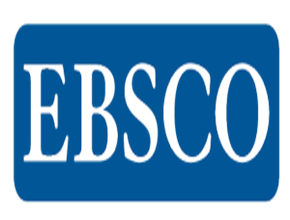Study the antibacterial activity of probiotics against uropathogenic (E. coli) of chronic kidney disease patients
DOI:
https://doi.org/10.32792/utq/utjsci/v12i1.1303Keywords:
Probiotic, Uropathogenic Escherichia coli (UPEC), Chronic Kidney Disease (CKD), Bacteriocin, Microdilution.Abstract
Chronic kidney disease (CKD) is a gradual decline of kidneys that results in kidney failure. This disease compromises the body's immune system, elevating susceptibility to infections. One of the serious risk factors for CKD is urinary tract infections (UTIs), which may also be the most common infectious disease associated with CKD patients. Recently, antibiotic resistance has become the biggest problem facing specialists in the field of treating infections; thus, probiotics could be an alternative solution for fighting pathogenic attacks, especially bacterial ones. This study aimed to investigate the antibacterial activity of probiotic effect against CKD-isolateduropathogenic Escherichia coli (E. coli) . From October 2023 to April 2024, 300 urine samples were collected from patients aged ≥ 18 years with suspected chronic kidney disease (CKD), and only 44 of the urine samples gave positive results for cultures. Uropathogenic (E.col) isolates which were double diagnosed by vitek-2 system showed almost high resistance results to 16 used antibiotics, and it showed that Ampicillin, Cefuroxime, and Cefurxime Axetil had the highest resistance results. The biofilm formation profile for 44 tested isolates showed 0% of non-formation, 0% of weak formation, 45.4% of moderate formation, and 54.6% of strong formation respectively. It was detected that only the bacteriocin concentrations of 125×103 µg/ml and 62.500 µg/ml showed the minimum inhibitory concentrations (MICs) for highly resistant bacterial isolates, and the broth microdilution method (BMD) was the best choice for this detection.
Received:2024-09-12
Revised: 2024-10-17
Accepted: 2024-11-04
References
[1] I. Dicu-Andreescu, M. N. Penescu, C. Căpușă, and C. Verzan, "Chronic kidney disease, urinary tract infections and antibiotic nephrotoxicity: are there any relationships?," Medicina, vol. 59, p. 49, 2022.
[2] C. P. Kovesdy, "Epidemiology of chronic kidney disease: an update 2022," Kidney international supplements, vol. 12, pp. 7-11, 2022.
[3] R. Noble and M. W. Taal, "Epidemiology and causes of chronic kidney disease," Medicine, vol. 47, pp. 562-566, 2019.
[4] R. Kaur and R. Kaur, "Symptoms, risk factors, diagnosis and treatment of urinary tract infections," Postgraduate Medical Journal, vol. 97, pp. 803-812, 2021.
[5] R. H. Tanabe, R. C. Dias, H. Orsi, D. R. de Lira, M. A. Vieira, L. F. Dos Santos, et al., "Characterization of uropathogenic Escherichia coli reveals hybrid isolates of uropathogenic and diarrheagenic (UPEC/DEC) E. coli," Microorganisms, vol. 10, p. 645, 2022.
[6] B. Kumar Shrestha, M. Tumbahangphe, J. Shakya, and S. Chauhan, "Uropathogenic Escherichia coli in urinary tract infections: A review on epidemiology, pathogenesis, clinical manifestation, diagnosis, treatments and prevention," Novel Research in Microbiology Journal, vol. 6, pp. 1614-1634, 2022.
[7] M. A. Salam, M. Y. Al-Amin, M. T. Salam, J. S. Pawar, N. Akhter, A. A. Rabaan, et al., "Antimicrobial resistance: a growing serious threat for global public health," in Healthcare, 2023, p. 1946.
[8] M. C. Morales-Alvarez, "Nephrotoxicity of antimicrobials and antibiotics," Advances in chronic kidney disease, vol. 27, pp. 31-37, 2020.
[9] V. Fanos and L. Cataldi, "Renal transport of antibiotics and nephrotoxicity: a review," Journal of chemotherapy, vol. 13, pp. 461-472, 2001.
[10] G. Su, H. Xu, E. Riggi, Z. He, L. Lu, B. Lindholm, et al., "Association of kidney function with infections by multidrug-resistant organisms: an electronic medical record analysis," Scientific reports, vol. 8, p. 13372, 2018.
[11] A. Hiergeist and A. Gessner, "Clinical implications of the microbiome in urinary tract diseases," Current Opinion in Urology, vol. 27, pp. 93-98, 2017.
[12] E. Stavropoulou and E. Bezirtzoglou, "Probiotics in medicine: a long debate," Frontiers in immunology, vol. 11, p. 2192, 2020.
[13] E. Bezirtzoglou and E. Stavropoulou, "Immunology and probiotic impact of the newborn and young children intestinal microflora," Anaerobe, vol. 17, pp. 369-374, 2011.
[14] R. A. Watson, "Enlisting probiotics to combat recurrent urinary tract infections in women—A military strategy for meeting the challenge," Antibiotics, vol. 12, p. 167, 2023.
[15] P. Ambalam, M. Raman, R. K. Purama, and M. Doble, "Probiotics, prebiotics and colorectal cancer prevention," Best practice & research Clinical gastroenterology, vol. 30, pp. 119-131, 2016.
[16] A. Tarrah, V. da Silva Duarte, J. de Castilhos, S. Pakroo, W. J. F. L. Junior, R. H. Luchese, et al., "Probiotic potential and biofilm inhibitory activity of Lactobacillus casei group strains isolated from infant feces," Journal of Functional Foods, vol. 54, pp. 489-497, 2019.
[17] E. Neau, J. Delannoy, C. Marion, C.-H. Cottart, C. Labellie, S. Holowacz, et al., "Three novel candidate probiotic strains with prophylactic properties in a murine model of cow's milk allergy," Applied and environmental microbiology, vol. 82, pp. 1722-1733, 2016.
[18] K. Egan, D. Field, M. C. Rea, R. P. Ross, C. Hill, and P. D. Cotter, "Bacteriocins: novel solutions to age old spore-related problems?," Frontiers in microbiology, vol. 7, p. 461, 2016.
[19] M. A. Riley and J. E. Wertz, "Bacteriocin diversity: ecological and evolutionary perspectives," Biochimie, vol. 84, pp. 357-364, 2002.
[20] L. M. Dicks, L. Dreyer, C. Smith, and A. D. Van Staden, "A review: the fate of bacteriocins in the human gastro-intestinal tract: do they cross the gut–blood barrier?," Frontiers in Microbiology, vol. 9, p. 2297, 2018.
[21] H. J. Benson, Microbiological applications: a laboratory manual in general microbiology: [McGraw-Hill], 2002.
[22] F. Tshabuse, N. Buthelezi, A. Folami, L. Donnelly, and F. Swalaha, "Rapid detection of drug-resistant Escherichia coli by Vitek 2 compact system," Water SA, vol. 48, pp. 450–456-450–456, 2022.
[23] N. Jaffar, T. Miyazaki, and T. Maeda, "Biofilm formation of periodontal pathogens on hydroxyapatite surfaces: Implications for periodontium damage," Journal of Biomedical Materials Research Part A, vol. 104, pp. 2873-2880, 2016.
[24] M. Balouiri, M. Sadiki, and S. K. Ibnsouda, "Methods for in vitro evaluating antimicrobial activity: A review," Journal of pharmaceutical analysis, vol. 6, pp. 71-79, 2016.
[25] K. B. Waites, D. J. Bade, C. Bébéar, S. D. Brown, M. K. Davidson, L. B. Duffy, et al., "Methods for antimicrobial susceptibility testing for human mycoplasmas; approved guideline," 2019.
[26] M. Elshikh, S. Ahmed, S. Funston, P. Dunlop, M. McGaw, R. Marchant, et al., "Resazurin-based 96-well plate microdilution method for the determination of minimum inhibitory concentration of biosurfactants," Biotechnology letters, vol. 38, pp. 1015-1019, 2016.
[27] H. I. Broth, "90922 Mueller Hinton Broth 2, Cation-Adjusted (MH 2 Broth; Mueller."
[28] F. Idris and U. Habibu, "In-vitro antibacterial activity of cinnamon bark extracts on clinical multi-drug resistant (mdr) Staphylococcus aureus, Klebsiella pneumoniae and Pseudomonas aeruginosa isolates," Bayero Journal of Pure and Applied Sciences, vol. 14, pp. 38-44, 2021.
[29] D. Borchert, L. Sheridan, A. Papatsoris, Z. Faruquz, J. Barua, I. Junaid, et al., "Prevention and treatment of urinary tract infection with probiotics: review and research perspective," Indian Journal of Urology, vol. 24, pp. 139-144, 2008.
[30] H. T. Majeed and A. A. J. Aljanaby, "Antibiotic susceptibility patterns and prevalence of some extended spectrum beta-lactamases genes in gram-negative bacteria isolated from patients infected with urinary tract infections in Al-Najaf City, Iraq," Avicenna journal of medical biotechnology, vol. 11, p. 192, 2019.
[31] A. Giedraitienė, A. Vitkauskienė, R. Naginienė, and A. Pavilonis, "Antibiotic resistance mechanisms of clinically important bacteria," Medicina, vol. 47, p. 19, 2011.
[32] C. Wijaya, A. H. Eriata, I. N. T. Rustawan, I. K. B. A. Candra, and N. N. S. Budayanti, "Prevalence of uropathogen producing extended spectrum beta lactamase (ESBL) at urinary tract infection in chronic kidney disease patients," Journal of Clinical Microbiology and Infectious Diseases, vol. 3, pp. 12-15, 2023.
[33] B. Kot, A. Grużewska, P. Szweda, J. Wicha, and U. Parulska, "Antibiotic resistance of uropathogens isolated from patients hospitalized in district hospital in central Poland in 2020," Antibiotics, vol. 10, p. 447, 2021.
[34] M. Ghane, L. Babaeekhou, and S. S. Ketabi, "Antibiofilm activity of kefir probiotic lactobacilli against uropathogenic Escherichia coli (UPEC)," Avicenna journal of medical biotechnology, vol. 12, p. 221, 2020.
[35] X. Lin, X. Chen, Y. Chen, W. Jiang, and H. Chen, "The effect of five probiotic lactobacilli strains on the growth and biofilm formation of S treptococcus mutans," Oral diseases, vol. 21, pp. e128-e134, 2015.
[36] D. Sharma and B. S. Saharan, "Functional characterization of biomedical potential of biosurfactant produced by Lactobacillus helveticus," Biotechnology Reports, vol. 11, pp. 27-35, 2016.
[37] P. Bernal and M. A. Llamas, "Promising biotechnological applications of antibiofilm exopolysaccharides," Microbial biotechnology, vol. 5, p. 670, 2012.
[38] S. Younas, B. Mazhar, I. Liaqat, S. Ali, H. M. Tahir, and N. M. Ali, "Bacteriocin production by Lactobacilli and their role as antibacterial tool against common pathogens," Journal of Oleo Science, vol. 71, pp. 541-550, 2022.
[39] E. Paul, Z. Garba, and D. James, "Synergistic-antagonistic antibacterial potential of chitosan composites with Moringa oleifera leaf powder," Journal of Applied Sciences and Environmental Management, vol. 23, pp. 759-762, 2019.
[40] M. Masoumian and M. Zandi, "Antimicrobial activity of some medicinal plant extracts against multidrug resistant bacteria," Zahedan Journal of Research in Medical Sciences, vol. 19, 2017.
Downloads
Published
Issue
Section
Categories
License
Copyright (c) 2025 University of Thi-Qar Journal of Science

This work is licensed under a Creative Commons Attribution 4.0 International License.












